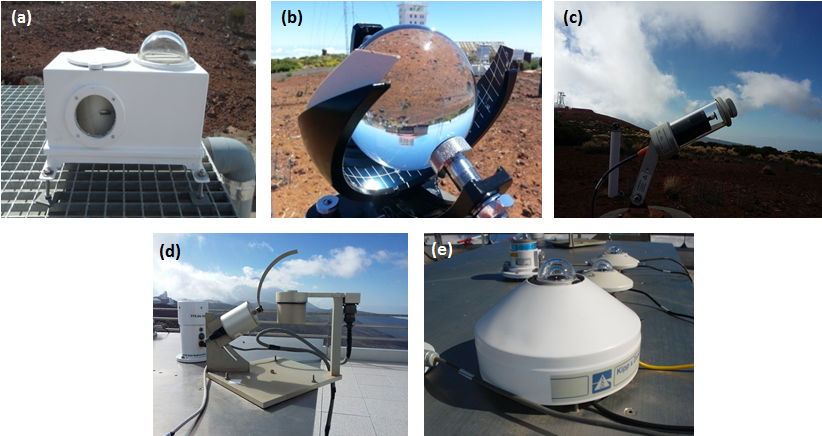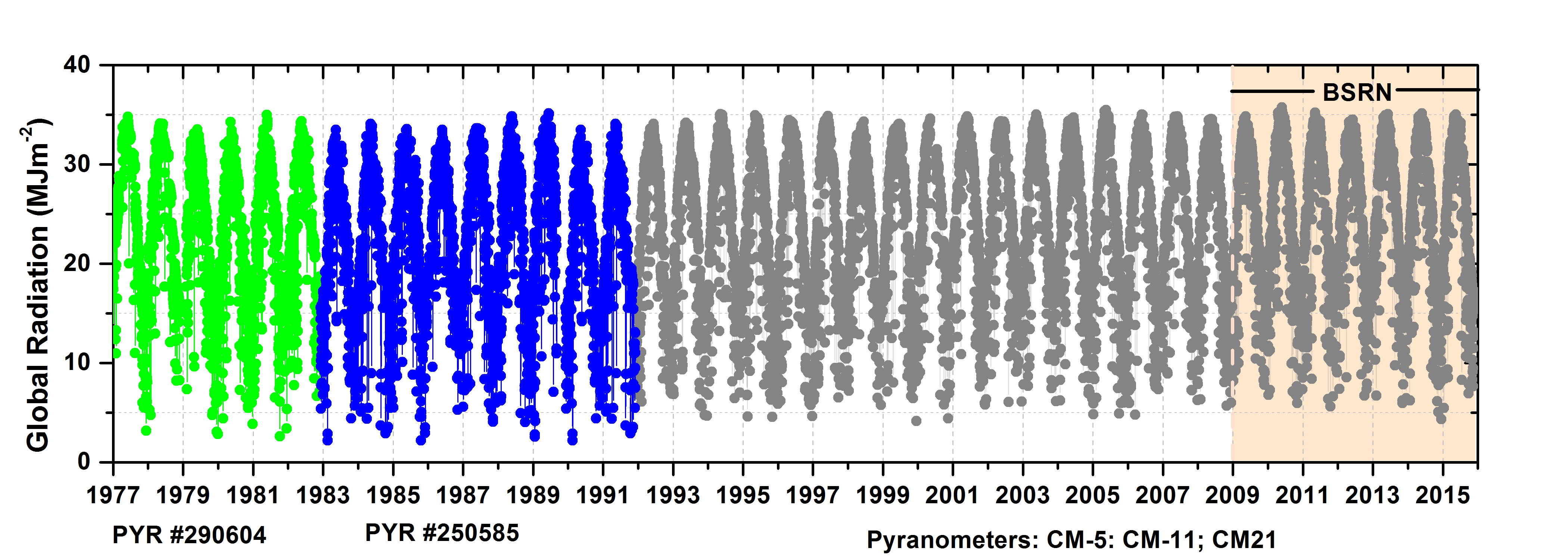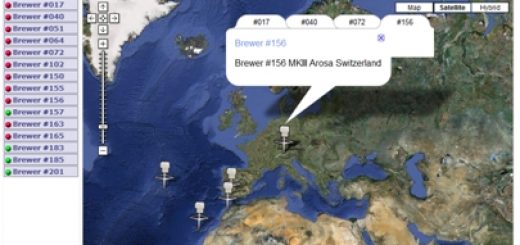“Compatibility of different measurement techniques of global solar radiation and application for long-term observations at Izaña Observatory” paper published in AMT
![]()
A 1-year intercomparison of classical and modern radiation and sunshine duration instruments has been performed at Izaña Atmospheric Observatory (IZO) located in Tenerife (Canary Islands, Spain) starting on July 17, 2014. We compare global solar radiation (GSR) records measured with a CM-21 pyranometer Kipp & Zonen, taken in the framework of the Baseline Surface Radiation Network, with those measured with a Multifilter Rotating Shadowband Radiometer (MFRSR), and a bimetallic pyranometer (PYR), and GSR estimated from sunshine duration performed by a Campbell-Stokes sunshine recorder (CS) and a Kipp & Zonen sunshine duration sensor (CSD) (Figure 1). Given the GSR BSRN records are subject of strict quality controls (based on principles of physical limits and comparison with the LibRadtran model), they have been used as reference in the intercomparison study.

Figure 1.- Solar radiation instrument used: (a) Robitzsch bimetallic pyranometer (PYR), (b) Campbell-Stokes sunshine recorder (CS recorder), (c) Kipp & Zonen sunshine duration sensor (CSD recorder), (d) Multifilter Rotating Shadowband Radiometer (MFRSR) and (e) pyranometer CM-21 Kipp & Zonen (BSRN) installed between July, 17 2014 and July, 12 2015 at IZO.
The results obtained show a good agreement between the measures with a RMSE of ~0.9 MJm−2 (4%) for GSR PYR and GSR MFRSR, 1.9 MJm−2 (7%) and 1.2 MJm−2 (5%) for GSR CS and GSR CSD, respectively. As application of the methodology developed in this work, we have re-evaluated the GSR time series between 1977 and 1991 obtained with two PYRs at IZO (Figure 2). By comparing with coincident GSR estimates from SD observations, we probe the high consistency of those measurements and their temporal stability.

Figure 2.- Daily GSR time series between 1977 and 2015 at IZO. The green and blue dots correspond to the measurements performed with PYR #290609 and #250585, respectively, between 1977 and 1991, and the gray dots represent the measurements performed with different pyranometers (CM-5, CM-11 and CM-21) between 1992 and 2015.
These results demonstrate that 1) the continuous-basis intercomparison of different GSR techniques offers important diagnostics for identifying inconsistencies between GSR data records, and 2) the GSR measurements performed with classical and more simple instruments are consistent with more modern techniques and, thus, valid to recover GSR time series and complete worldwide distributed GSR data. The intercomparison and quality assessment of these different techniques have allowed to obtain a complete and consistent long-term global solar radiation series (1977-2015) at Izaña.
Further details about this study can be found at the on-line paper:
García, R. D., Cuevas, E., García, O. E., Ramos, R., Romero-Campos, P. M., de Ory, F., Eugenia Cachorro, V., and de Frutos, A.: Compatibility of different measurement techniques of global solar radiation and application for long-term observations at Izaña Observatory, Atmos. Meas. Tech., 10, 731-743, doi:10.5194/amt-10-731-2017, 2017.
The paper can be downloaded at: http://www.atmos-meas-tech.net/10/731/2017/amt-10-731-2017.html







